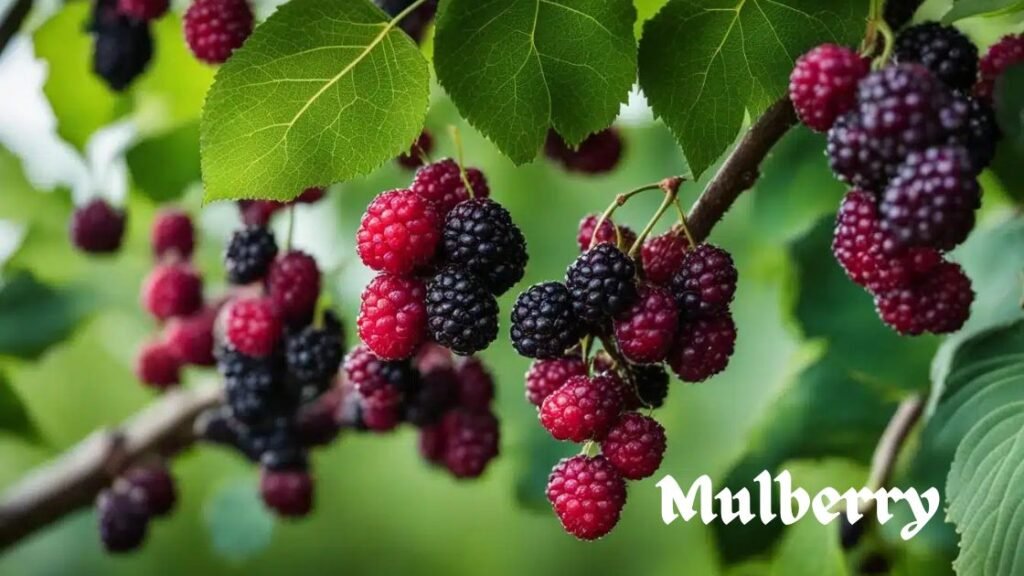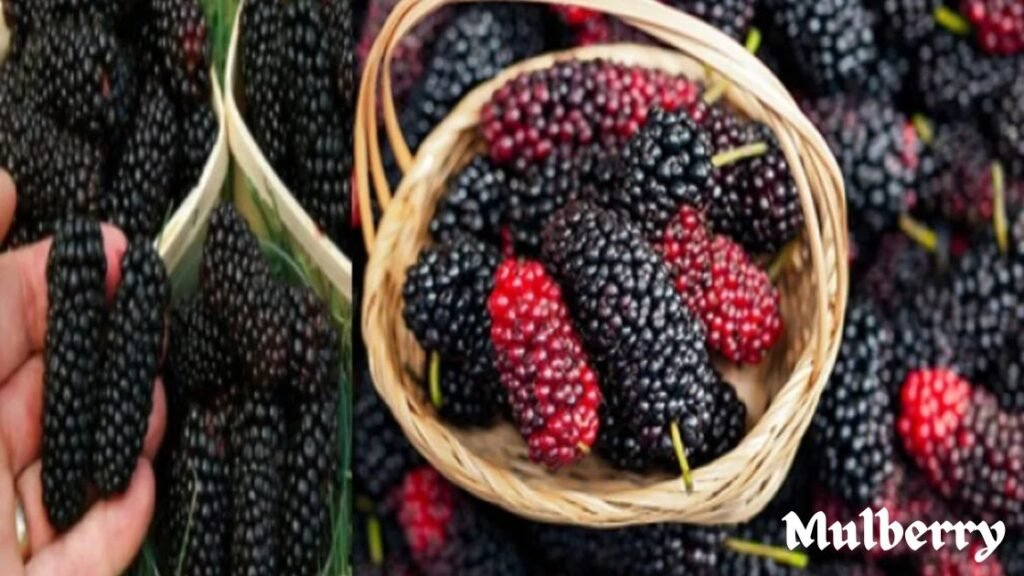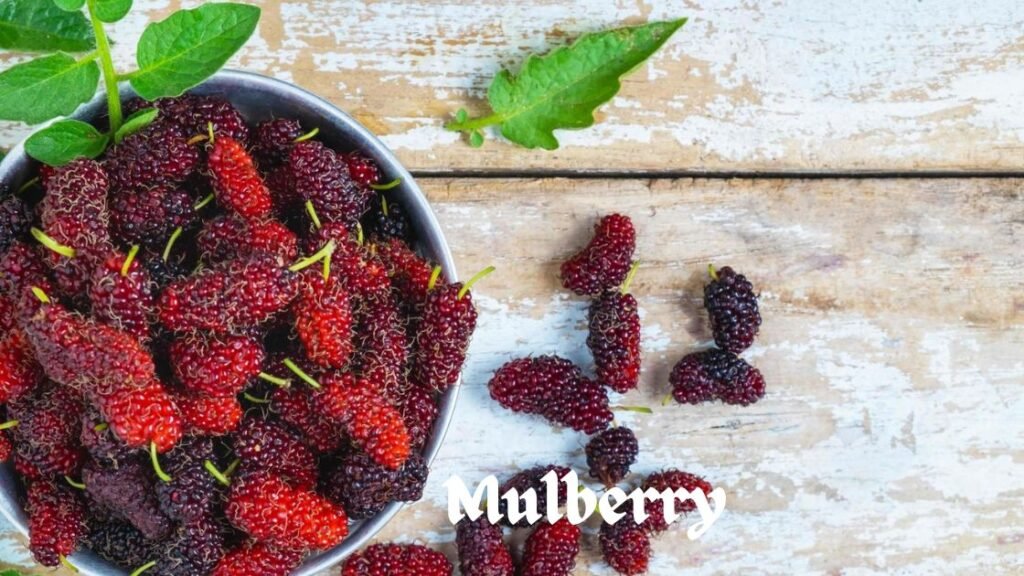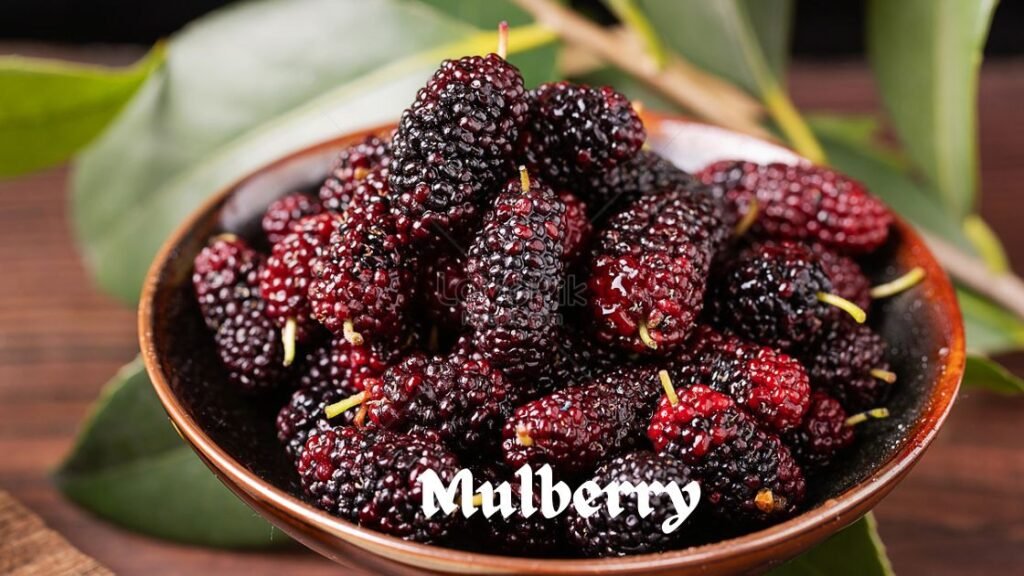
The mulberry fruit is known as Toot and Shahtoot (kings or “Superior” mulberry) and are sweet, luscious and mouth-watering. People also like it.
Mulberry plants are adapted to tolerate extreme cold and hot temperatures of the dry region and this crop can be seen as one of the sustainable fruit crops of the dry region. Asia is considered to be the center of origin of mulberry. Mulberry is botanically known as morus species and is a plant of the Moraceae family.
Shahatoot (Mulberry) also known as morous alba. The scientific name of mulberry is Morus alba. ‘Mor-as’ is a latin word meaning oddly enough’, from which the word ‘stool’ originated. Many Species of the genus Morus are found and include the native red mulberry (Morus ruba), East Asian white mulberry (Morus alba), and south-western Asian black mulberry (Morus nigra), etc.
Mulberry fruit is very useful for human.
How People Consume Mulberry?
Mulberry is a very sweet fruit rich in nutrition. It tastes like grapes and is a good source of multivitamins. The carbohydrates in mulberries convert to glucose, which provides energy to cells. Consuming mulberries can help get rid of iron deficiency.
The human body can also get oxygen from mulberries. They can be consumed in various ways, such as fruit wines, berries, jams, jellies, or muesli. Mulberries can also be consumed as juices and syrups for the effective management of various diseases. They are used in beautiful salads and a variety of jams. Anyone can choose them.

Availability
Mulberry fruit is very delicious. In India, it is grown mainly in Punjab, Haryana, Himachal Pradesh, West Bengal, Karnataka, Andhra Pradesh, and Tamil Nadu. The white mulberry originally comes from eastern and central China.
History of Mulberry Fruit
The history of the Mulberry fruit is rich and diverse, Spanning centuries and various cultures around the world. Here are some key points about its history. Here brief history of mulberry fruit.
- The practice of sericulture, or rearing silkworms that feed on mulberry leaves, is believed to have originated in China.
- The origin of the mulberry fruit is also thought to be in China, based on the history of sericulture.
- The mulberry fruit was brought to India by Tibetan people around 140 B.C.
- In the 18th century, the English East India Company expanded its trade in Bengal raw silk to transfer Indian revenues to Britain.
- The British and Italian silk industries were connected, and mulberry trees were planted in India by an Italian named Giuseppe Mutti to produce silk in Bombay.
- Mulberry trees were extensively cultivated in the Nawab’s gardens at Ellichpur.
Origins and Early Use
Here are some key points about the origins and early use of mulberries
- Mulberries are native to Asia, Europe and Africa, with the fruit being a delicacy for royal families in some countries.
- The ancient China, mulberry leaves were used to feed silkworms for silk production, making mulberry
- trees important for the silk industry.
- Europeans brought mulberry trees to America in the 17th century, hoping to start a silk industry, but the fruit became popular instead.
- Mulberries were used in traditional Chinese medicine to treat digestive issues and inflammation.

Taste of mulberry fruit
- Mulberry is so sweet taste.
- 3 colour of mulberry in available.
- ripe white mulberry are extremely sweet, with flavours similar to like honey.
- black mulberry fruit taste is sweet and acidic.
- Red mulberry fruit is so sweet and hints of honey and sugar.
Health Benefits
- Good digestion.
- Lowers cholesterol levels.
- Help in weight loss.
- Boost the immune system.
- Builds bone tissue.
- lower blood presure.
- Protects the eyes.
- Promotes liver helth.
- Enhance skin helth.
- May aid in regulating blood pressure.

Cost
The prices of mulberry’s depend on various factors, so the prices may vary based on your location and the seller.
white mulberries might cost between Rs1,200 to Rs2,000 per kilogram. These prices can vary based on availability, location, and market conditions.
Red Mulberry’s Price is Rs200 to Rs500 per kilogram.
Generally, fresh black mulberries in India can cost between ₹300 to ₹600 per kilogram, while dried black mulberries might range from ₹800 to ₹1,500 per kilogram.
Read to know about Majnu ka tilla Delhi
Conclusion: Mulberry fruit
In conclusion, mulberry fruit is a nutritious and delicious addition to a healthy diet. With its rich history, cultural significance, and numerous health benefits, it’s no wonder mulberries are gaining popularity worldwide. Here’s a quick summary of the key points:
Overall, mulberries are a fruit worth getting to know better. Whether you enjoy them as a healthy snack or incorporate them into your cooking and baking, mulberries are sure to delight your taste buds and nourish your body.
Mulberry’s are a costly fruit, very healthy, and quite unique.
Read more: 5 best cafe in cuttack